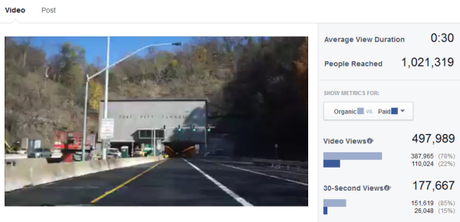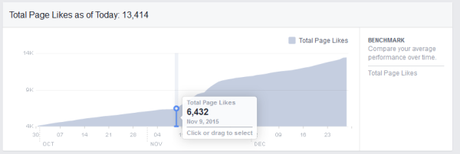You know what terrifies me? Having a blog post go viral.
I don't care if one of my social media updates goes viral. I don't even mind if an article I write on a 3rd party website does too. But when it comes to articles on my own sites, I really don't want them to explode.
Going viral may work out well for many, as an incredibly popular post is a great way to jump start a young website and bring in new fans, but in reality there are many drawbacks.
I never really considered this thought until witnessing a recent Facebook update from our local Pittsburgh blog get over 1,000,000 organic reach. After thinking it over, I can safely say that I am really glad that happened there rather than on a site I pay for myself. The results would've been horrible for me, and there are many reasons for why I came to this conclusion.
Going Viral Can Be Very, Very Expensive
Unless you run a website, you may not know about what all goes into paying for it to be live on the internet. There are domain fees, plug-in fees, advertising fees, newsletter fees, and server fees- just to name a few.
The latter two are the most important here, as they are the first ones to jump up into astronomical territory if your site explodes. To make matters worse, the services charge a monthly rate.
On the server side of things, a viral post can very well crash a website for hours if it is run on a cheap plan, and many blogs that go viral miss out on substantial traffic purely because they're not running on a server powerful enough to deal with it. So what do they do? They upgrade and spend a lot of money on something that may not be sustained- often just to get the site back online.
When that jump is going from $10-$50 per month to $250-$500 per month, I'm not really interested- especially in a sudden jump that wasn't planned for.
Newsletter rates are on a similar structure, as a blog with 1,500 subscribers (as an example) may be operating under a free plan from Mailchimp and not have to factor in fees for quite some time. A viral post that brings in 2,000 new subscribers causes that rate to immediately jump to $50/month, and those fees quickly rises to over $100/month at just over 10,000 subscribers.

So if that Facebook update we mentioned at the beginning of this article (screencap above) happened on our website, and the extra 5,000 fans we picked up were converted to our newsletter, our out of pocket spending from server and newsletter upgrades would likely have jumped $250-$400 per month just from that one spike. Ouch.
Now, if you're selling products on your website and are able to convert these page views to significant revenue, you probably won't care if you have to pay an extra $400. I'll gladly spend $400 if it meant I was earning anything higher than $401. But as a blogger that only monetizes through affiliate sales, odds are good that earnings from a viral post would not offset any of these above fees unless you got very, very lucky.
Until we got to a point where that was easily achievable, having all of those added costs would be a burden we don't want to deal with. This is one time where slow growth and a long game plan can work to your advantage.
Do You Even Care About My Blog?

The second downside to going viral is the audience themselves. On our viral Facebook update, out of that 1,000,000 reach only about 5,000 actually decided to like our page (see screenshot above). That is roughly half a percent (0.5%).
If the same number of people visited our website that were as interested in sticking around, that would be an awful lot of traffic that is, for lack of a better word, a waste.
Considering our current newsletter subscription rate is well over 2% on our local blog (with a 0% unsubscribe rate since being founded), traffic from going viral is nowhere near as good. So for the time being, letting those subscribe to an ancillary service like Facebook makes sense, as I can easily tap into interested users in the future without dealing with the burden myself.
It may cost a bit through advertising, but it is far more manageable than the alternatives.
I Don't Want 99.99% Of My Traffic on One Article
The final downside is that a post that goes viral may stay popular for many months or even years. This means that you're going to be paying inflated fees to run your site for the sole purpose of maintaining traffic to one (or a select few) articles.
Sure, you may be able to pitch great readership numbers to possible advertising partners, but odds are good the number you're sharing is bogus. If you're wanting to build up a site to provide a value to partners in the terms of impressions and conversions, unless you're providing that through the viral post itself, everything else is a sham- it is easy to see through as well.
I do not want that to happen on our sites, as it would really throw a wrench into the plans we're putting forward moving into the future.
What about you- have you had an article explode in popularity on your site? How did you cope with the explosion in traffic? Comment below to share your story!
